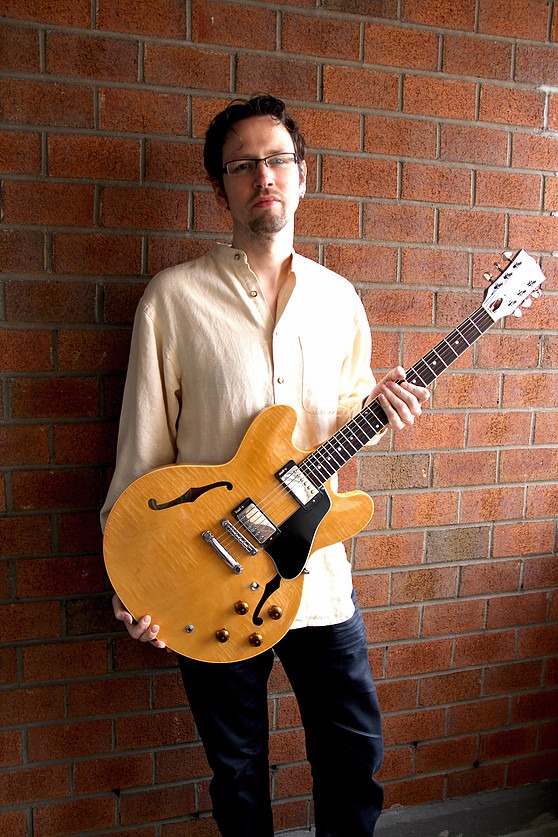The Distilled Sounds Of Melodic Minor

The melodic minor scale (in its ascending form) is notoriously elusive for intermediate jazz students. It is also indispensable, and is often referred to as ‘jazz minor’.
Featured prominently in countless standards and jazz classics such as ‘Solar’, ‘I Hear a Rhapsody’ or ‘Johnny Come Lately’, it is often used as the primary scale for improvising in a minor key.
But this is just the beginning. Many of its modes are equally important:
Lydian #5 (3rd mode), Lydian Dominant (4th mode), Locrian 9 (6th mode) and Altered (7th mode). Not so often used are modes 2 (Dorian b9) and 5 (Mixolydian b13), although they too can be interesting to tap into.
For decades my method as a teacher has been to make the student learn every mode in every key, from the root up. While all this is also important, it can present as a daunting task for the beginner or intermediate student, who is gaining experience playing in an ensemble situation or needs concise material to use in a jam session.
During the last couple of years I have been looking for more direct and practical ways to help my students approach the jazz vocabulary of the masters we all so admire. I now favor teaching jazz harmony as a small set of universal voicings that can be applied in many situations and cover most of the sounds we need.
For the purpose of this lesson I have distilled the sound of melodic minor into two universal arpeggio ‘shapes’, that can be applied to any of the aforementioned modes and used as a springboard to develop your own phrases. I teach mostly guitar students, and on our instrument these sounds are quite literally shapes on the fretboard (more about this below), but I am hopeful that students of all melodic instruments will find this idea useful.
Let’s jump right in!

I suggest that you start by singing these first. This is by far the best way to get them in your ear. When you can do that, pick up your instrument and play each of these shapes up and down for a while, getting used to how they feel and how they sound. Try not to associate them with any chords at first, taking them in as pure sound. Find out what these sounds suggest to you. This is an individualistic process. No judgment. To me, melodic minor conjures up words like ‘mysterious’, ‘ambiguous’, or ‘noir’. It sounds more complex than the major scale due to the fact that it has two tritones within the scale, as opposed to one. It also has an ambiguous minor/major quality, since the lower tetrachord (four consecutive scale notes) is a minor, and the upper a major one. Find your own associations.
One of the greatest strengths of melodic minor is the fact that there are no ‘avoid’ notes. Every note sounds good on any of its modes, which is not the case for the major scale modes.
Now let’s look at how we can use these arpeggio shapes on different chords:

Let’s take the first chord of Stella By Starlight as it is played by most jazz musicians today, Em7b5. In order to apply Shape A to this chord, we have to make the bottom note the b3 (the note G) of the chord. For Shape B, the bottom note has to be the root, E.
We can look at these Shapes as puzzle pieces of melodic minor DNA, which we are learning how to fit into the mold of a given chord/mode.
The next chord in ‘Stella’ is an A7alt. We can use Shape A by making the bottom note the b2 (the note Bb) or Shape B by making the bottom note the b7 (the note G).
For the purpose of practicing this process, you can ‘convert’ every m7 chord into a minmaj7 and every maj7 into a maj7#5. I do this often on the spot when I’m playing a tune. By doing this, you could theoretically use these shapes on every chord in ‘Stella’. It is a straightforward way of using extended harmony on a familiar chord progression. Similarly, you could decide to make all dom7 chords dom7#11, or dom7alt. We usually use altered for V7 chords and lydian dominant for secondary dominants (such as bII7 or bVII7), but you have the freedom to change that. Thelonious Monk is notorious for using lydian dominant on a lot of V7 chords.
When we listen to and analyze the language of 40s, 50s and 60s jazz we find these sounds and shapes all over the place. I find them much more useful and closer to the sound of jazz than the basic arpeggios (1-3-5-7), which we tend to be expected to master first by most teaching methods. The same can be said about scale-based improvisation. Don’t get me wrong, scales are beautiful and useful, especially in modal situations. And there are certain improvisers who favor them. But overall, jazz improvisation is a language that is based on chord tones.
Making Music
Playing these shapes up and down on every chord is a good starting point but it is not the end goal. Far from it. Yes, you are playing the right notes, but the real music making begins when you use them in more creative ways.
Here are some examples of how one could do this.
I am using Shape A for this purpose, but it works the same way with Shape B:

There are many patterns we can create, with the most common being groups of three and groups of four notes.

Another basic building block of the bebop language. The one used in this example is called an ‘enclosure’: Chromatic from below → double chromatic from above → chromatic from below → target note. There are many possible combinations of chromatic and double chromatic approaches from below and above. Some sound better than others. Explore!

Finally, we can mix scale passages into these arpeggio shapes. In this example we are starting with four notes of the arpeggio, followed by a scale passage and ending again with part of the arpeggio shape.
Just as we did when we started getting the original shapes under our fingers and in our ears, practice these without being attached to a chord at first. Create your own variations using these devices. Use your ears. Use your intuition. Focus on sound, feel, and swing.
These exercises are presented in the key of G minor, but of course you should practice them in all 12 keys.
Now use them on different chords, referring to the table above, the same way we did with the original shapes. Explore every possible chord type. When I do this in a thorough way, I still discover new ways to apply these sounds.
Now try this on a tune. Make sure you don’t always start and end a phrase on beat one. Explore all possibilities. You might find that a phrase ending on an upbeat creates forward motion, while ending it on a downbeat can sound static, although at the right moment it has a grounding quality.
Further Investigation
Let’s dig a little deeper. The six pitches of each one of these phrases are organized in thirds, which means we can break them up into triad pairs. The bottom three notes of Shape A form a I minor, the top three notes a VII diminished triad, e.g. G-/F#o. Using the same rationale, Shape B can be expressed as a V major over VII diminished triad, e.g. D/Eo. Triads are a great way to bring out the sounds of melodic minor! Use the other two inversions as well. Getting into all these possibilities might be a good subject for another lesson.
Guitar
Finally a few works about practicing these shapes on the guitar.
As I have mentioned at the beginning of this lesson, these phrases have an added visual component for guitarists. Memorizing them as actual shapes on the fretboard can be helpful.


Observations:
If you connect the corner dots on each of these shapes, you get a rectangle.
Shape A on the top four strings can be visualized as an X, with its center being more to the right.
Shape B on the top four strings can be visualized as an X, with its center being more to the left.
Shape A on the middle four strings can be visualized as a diagonal line inside a rectangle.
We get two notes on bottom and top strings of each of these shapes, which means we can use hammer ons and pull offs for a more legato phrasing. This sounds great!
While this is helpful, thinking in shapes is only a step towards using these in a musical and organic way. Shapes are a blessing and a curse for us guitarists. Don’t get stuck in them. A good antidote is to always go back to singing them as well.
Have fun!

